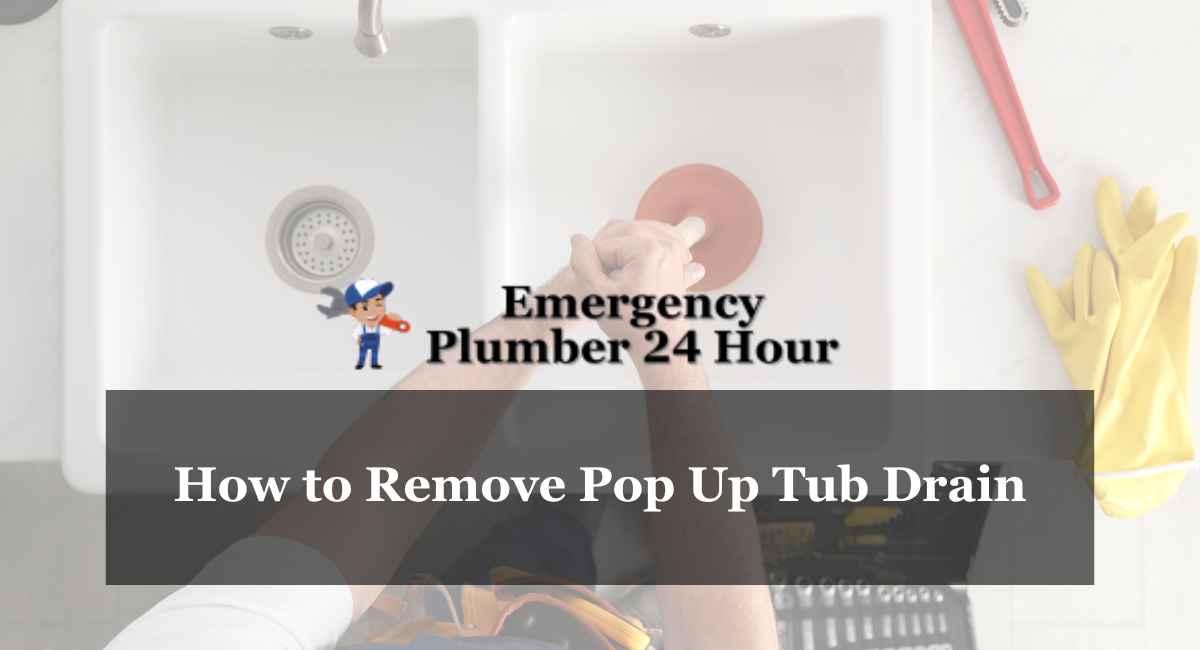Ah, the dreaded clogged bathtub drain. Hair, soap scum, and other debris can accumulate, creating a frustrating backup.
But fear not, fellow bathers! This guide empowers you to tackle this common plumbing issue by removing your pop-up tub drain and cleaning the culprit behind the clog.
Before You Begin: Gathering Your Tools and Understanding the Terrain
Before diving into the disassembly, it’s essential to gather the necessary tools:
- Flat-head screwdriver: This trusty tool will help pry open components and access hidden screws.
- Needle-nose pliers (optional): These can be helpful for gripping small parts or stubborn debris.
- Flashlight: Shine a light into the drain opening to get a better view of the clog and any hidden mechanisms.
- Bucket or towel: Place this under the drain to catch any water or debris that might fall during removal.
- Drop cloth (optional): Consider using a drop cloth in the bathtub to protect the surface from drips or splashes.
Now, let’s get familiar with the anatomy of your pop-up drain. Most consist of three main parts:
- Drain stopper: The visible part you press down to close the drain opening.
- Lift rod: This rod connects the stopper to the drain mechanism beneath.
- Drain mechanism: This hidden component controls the opening and closing of the drain and is where clogs often reside.
Step-by-Step Guide: Removing Your Pop-Up Tub Drain
Here’s a breakdown of the removal process, focusing on the two most common types of pop-up drains:
1. Removing a Drain Stopper with a Lift Rod:
- Open the Drain: Press down on the stopper to ensure the drain is open.
- Locate the Lift Rod Release Mechanism: Look for a small hole, slot, or button on the overflow plate (the metal plate surrounding the drain opening). This mechanism releases the lift rod from the drain stopper.
- Engage the Release Mechanism: Depending on your drain design, you might need to insert the flat-head screwdriver into the slot, push a button, or twist a small knob. Refer to your bathtub manual or manufacturer’s website if unsure.
- Remove the Lift Rod: Once the release mechanism is engaged, gently pull the lift rod upwards. The drain stopper should become loose and easily pop out.
2. Removing a Screw-On Drain Stopper:
- Unscrew the Stopper: Use your hand or pliers to grip the outer rim of the drain stopper and turn it counter-clockwise. The stopper should unscrew from the drain body.
3. Removing the Drain Mechanism (Optional):
In some cases, you might need to remove the entire drain mechanism for a more thorough cleaning.
However, this step can be more complex and might require additional tools or replacement parts. If you’re unsure, consider consulting a plumber for assistance.
Confronting the Clog: Cleaning and Reassembly
Once you’ve removed the drain stopper and lift rod (or accessed the drain mechanism), it’s time to tackle the clog:
- Remove Debris: Use your fingers, needle-nose pliers, or a long, thin object to remove any visible hair, soap scum, or debris.
- Clean the Drain Opening: Run hot water and consider using a drain cleaner suitable for pop-up drains (always follow the manufacturer’s instructions).
- Inspect the Lift Rod and Drain Mechanism: Look for any signs of damage or wear and tear. Clean them with a damp cloth if necessary.
Reassembly is typically the reverse of the removal process. Carefully reinsert the lift rod (if applicable), screw on the drain stopper (if applicable), and ensure everything clicks back into place securely.
Prevention is Key: Tips for Maintaining a Clog-Free Drain
Here are some tips to prevent future clogs and minimize the need for drain removal:
- Install a drain cover: A drain cover helps trap hair and debris before they enter the drain.
- Clean the drain regularly: Pour a mixture of baking soda and vinegar down the drain once a month to help break down buildup.
- Avoid harsh chemicals: Drain cleaners containing harsh chemicals can damage your pipes over time. Opt for natural cleaning methods whenever possible.
- Address minor issues promptly: A slow-draining tub could indicate a developing clog. Addressing it early can prevent a major backup.
The Takeaway: Unclogging Your Drain with Confidence
By following this guide, you’re now equipped to remove your pop-up tub drain and tackle those pesky clogs. Remember, understanding your drain’s design By following this guide, you’re now equipped to remove your pop-up tub drain and tackle those pesky clogs.
Remember, understanding your drain’s design and using the right tools are key to a successful (and frustration-free) experience.
When to Call in the Professionals: Recognizing Your Limits
While removing a pop-up drain and cleaning a clog is often manageable, there are situations where seeking professional help is wise:
- Hidden Leaks: If you notice water damage around the bathtub or suspect a leak behind the drain, calling a plumber is crucial. They can identify the source of the leak and make necessary repairs.
- Broken Parts: If you encounter broken components like a snapped lift rod or a damaged drain mechanism, a plumber can assess the situation and recommend replacements or repairs.
- Stubborn Clogs: If your attempts at removing the clog fail, or the clog seems deeply lodged within the pipes, a plumber has the specialized tools and expertise to handle more complex blockages.
Conclusion: A Clean Drain and a Happy Bather
Conquering a clogged bathtub drain can be a satisfying accomplishment. By understanding the removal process, having the right tools at hand, and prioritizing preventative measures, you can maintain a clean and functional drain for a relaxing and enjoyable bathing experience.
So, next time a clog disrupts your bath time, remember this guide and tackle the problem with confidence!
